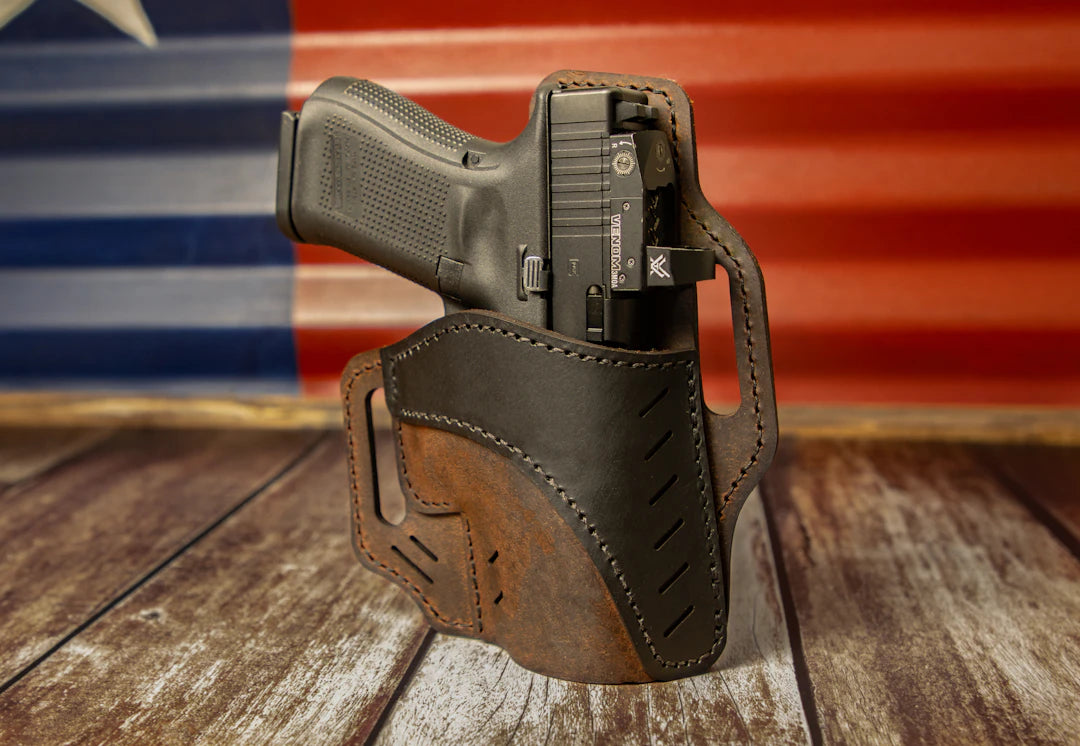In the world of firearms and self-defense, proper holstering etiquette is a crucial aspect of responsible ownership. Whether you're using a pistol mag holder or just looking for tips to improve your everyday carry (EDC) techniques, understanding the underlying principles of holstering your firearm is essential. This guide will delve into the nuances of holstering etiquette and best practices, arming you with the knowledge to carry safely and confidently.
Understanding the Importance of Holstering Etiquette
Holstering etiquette goes beyond merely slipping your firearm into a holster. It encompasses a range of safety practices that are critical for both you and those around you. When carrying a firearm, whether in a professional setting or during everyday activities, adopting proper holstering practices minimizes the risk of accidental discharges and enhances your overall preparedness. Here are a few key reasons why holstering etiquette is important:
- Safety: Proper holstering ensures that the firearm remains secure and inaccessible until you decide to draw it.
- Responsibility: As a gun owner, demonstrating safe handling fosters trust and respect towards firearms in your community.
- Preparedness: Understanding how to holster your firearm effectively can prepare you for rapid responses in high-stress situations.
Choosing the Right Holster
Your choice of holster significantly impacts your holstering etiquette. The right holster ensures ease of access, comfort, and safety. Below are some factors to consider when selecting a holster:
1. Material
Holsters come in various materials, including leather, Kydex, and nylon. Each material offers distinct advantages and disadvantages. Leather is traditionally known for its comfort and classic appearance, while Kydex provides a molded fit and better retention. Evaluate your needs before making a decision.
2. Carry Style
Consider how you intend to carry your firearm: inside the waistband (IWB), outside the waistband (OWB), appendix carry, or another method. Your holster choice should align with your preferred carry style for optimal accessibility and comfort.
3. Retention
Retention is critical for ensuring your firearm stays in place while you’re active. A good holster should secure your weapon without excessive effort to draw it. Choose a holster that meets your needs, whether that's a passive retention system or one that employs active retention measures.
Basic Holstering Techniques
Once you've selected the right holster, knowing how to holster your firearm properly is paramount. Here are some basic techniques to follow:
1. Always Keep the Firearm Pointed in a Safe Direction
Safety should always be your top priority when holstering your firearm. Ensure that the gun is pointed in a direction where an accidental discharge would not cause harm. This is perhaps the most fundamental rule of gun safety.
2. Verify the Firearm is Unloaded
Before holstering, always confirm that your firearm is unloaded. No exceptions. Visually and physically inspect the chamber to ensure it’s clear. If you are transitioning between carrying live ammunition and unloaded practice, maintain a strict protocol for verifying status.
3. Engage in Conscious Movements
Holstering your firearm should be a deliberate action. Take your time to re-position your firearm without rushing. Hasty movements can lead to accidents, so be mindful of your body and the surrounding environment.
4. Use Both Hands If Necessary
For added control, consider using both hands while holstering. Secure the firearm with one hand and gently guide it into the holster with the other. This additional control decreases the chances of accidents and ensures a snug fit.
Accessorizing Your EDC: The Pistol Mag Holder
Alongside holstering your firearm, accessorizing with a pistol mag holder is equally important in your everyday carry setup. Carrying extra magazines can be crucial in self-defense scenarios, providing you with the necessary firepower without compromising your safety. Here’s how to effectively integrate a pistol mag holder into your EDC routine:
1. Placement
The placement of your pistol mag holder is vital. Ensure that it is positioned for quick accessibility without being too exposed. Locate the holder in an area that is easily reachable while still maintaining concealment when appropriate.
2. Choose the Right Holder
Just like your holster, select a pistol mag holder that’s comfortable, functional, and made from durable materials. There are various styles available—choose one that complements your lifestyle and preferred carry methods.
3. Practice Smooth Transitions
Whenever you draw your firearm, it’s essential to do it smoothly while maintaining control. Simulate such scenarios to practice quick and efficient transitions between your firearm and pistol mag holder. This practice will bolster your confidence in high-pressure situations.
Daily Carry Considerations
In everyday carry (EDC), the way you holster and manage your firearm must be adapted to various settings and situations. Here are several factors to consider:
1. Dress for the Occasion
Your clothing choices can impact the safety and comfort of your carry. Opt for attire that enables you to securely and discreetly holster and access your firearm. Stretchy fabrics and oversized styles may provide better concealment for your EDC items.
2. Situational Awareness
Always maintain situational awareness when holstering or unholstering your firearm. Be mindful of your surroundings, the people around you, and the potential for any sudden changes in the environment. Keeping a calm demeanor and being alert contributes positively to responsible carry practices.
3. Regular Maintenance
Regularly check your holster and pistol mag holder for any signs of wear or damage. Keeping these accessories in good condition is essential for ensuring they function properly. If you notice any issues, consider replacing them or seeking professional advice.
Legal Considerations in Holstering
Understanding local laws concerning firearms and their carry methods is fundamental for responsible ownership. Different states have varying regulations regarding concealed and open carry. Here are some essential legal considerations:
1. Know Your State’s Laws
Before you holster your firearm in public, ensure that you’re well-versed in your state’s laws regarding firearm carry. This knowledge encompasses restrictions on carry types, where you may carry, and certain locations where carrying may be prohibited. Stay updated, as laws can frequently change.
2. Comply with Business Policies
Always verify business policies in establishments you plan to enter regarding firearms. Some businesses may prohibit weapons, and following their guidelines is crucial to maintaining respect for the property and its management.
3. Train and Educate
Consider attending firearm courses focused on holstering and overall firearm safety. These classes can provide valuable insights into best practices, legal considerations, and the fundamentals of responsible firearm ownership.
Elevate Your Carry: Confidence Through Practice
Ultimately, mastering holstering etiquette and best practices goes beyond simply knowing the rules. Implementing these guidelines into your daily routine enhances your EDC experience and ensures that you remain safe and confident while carrying your firearm. Remember, education and training are ongoing processes, and consistently practicing your skills will keep you sharp and ready for any situation.
The journey towards responsible firearm ownership is a commitment that requires diligence, awareness, and respect. By following these best practices, you will not only increase your own safety but also contribute positively to the community of responsible gun owners. Embrace this journey and elevate your everyday carry experience to new heights!

